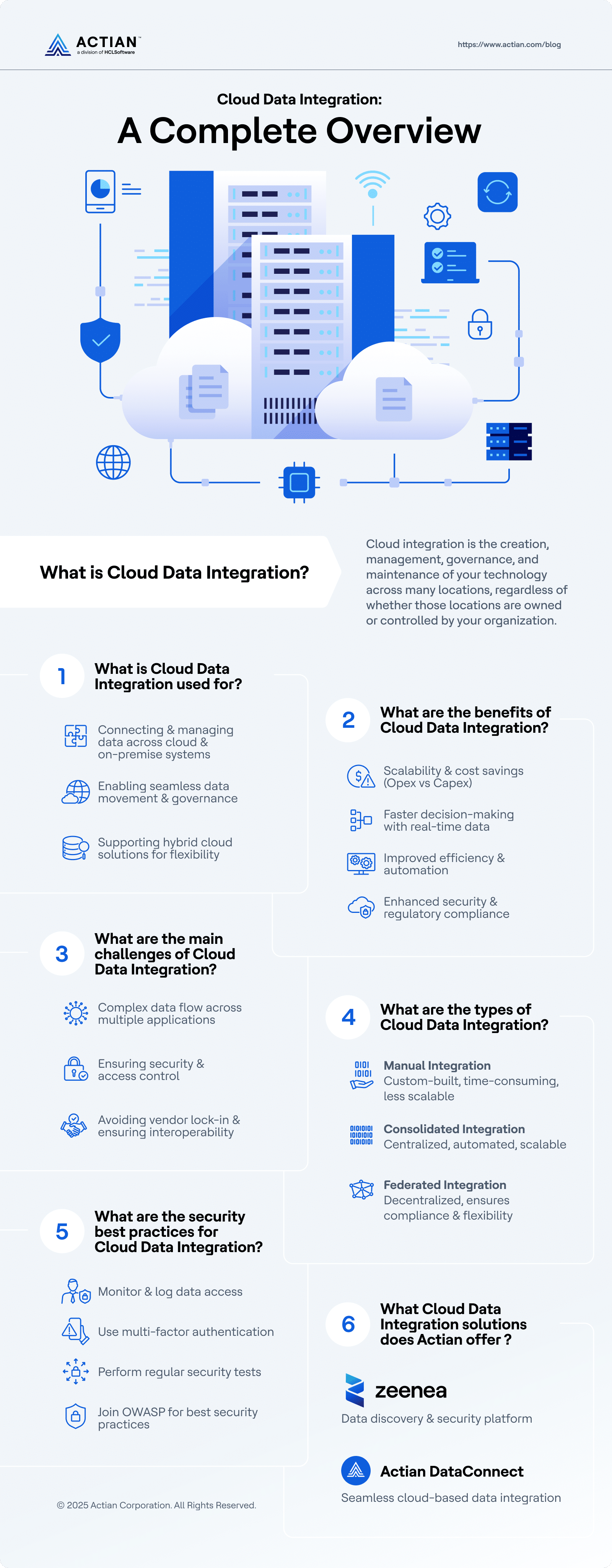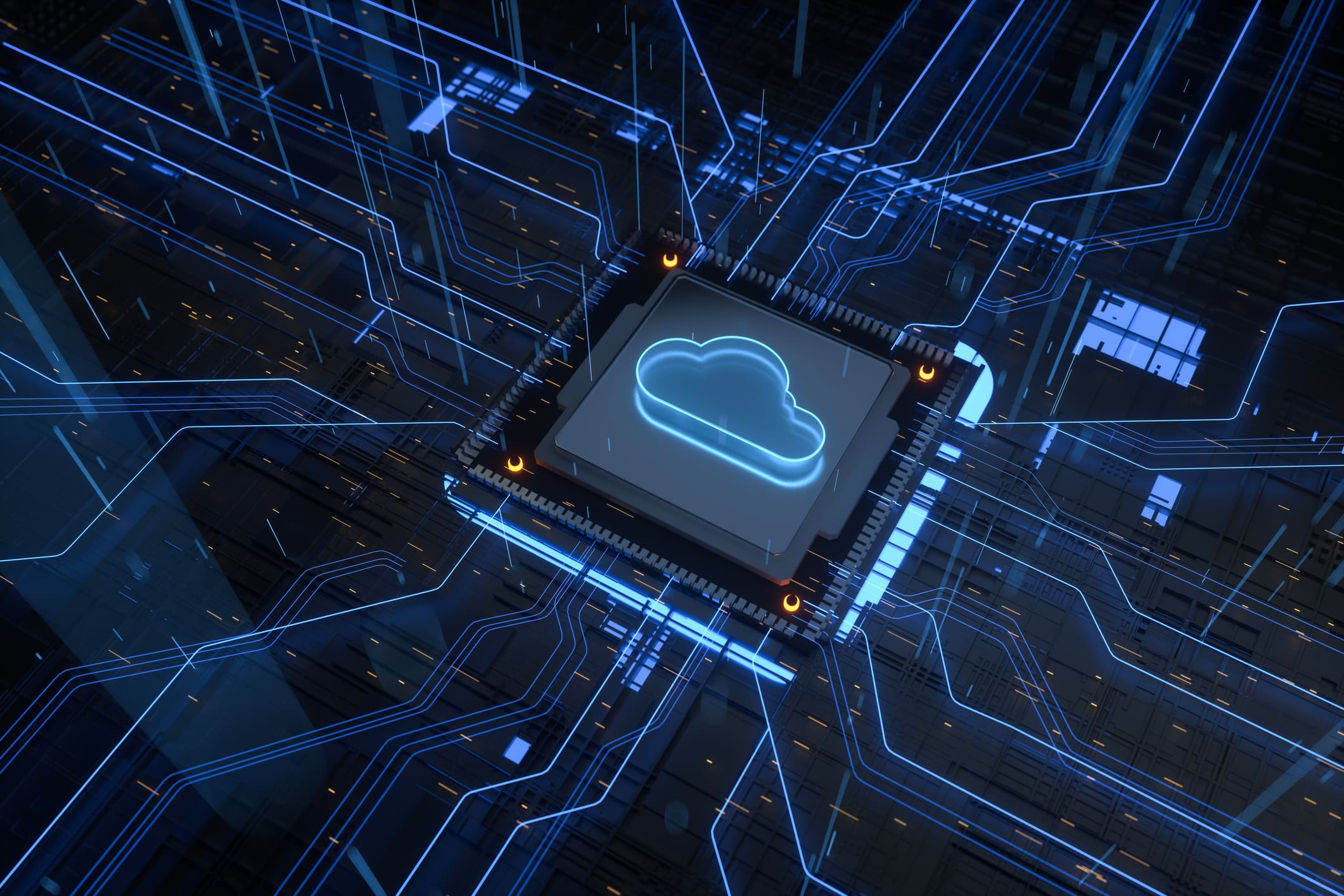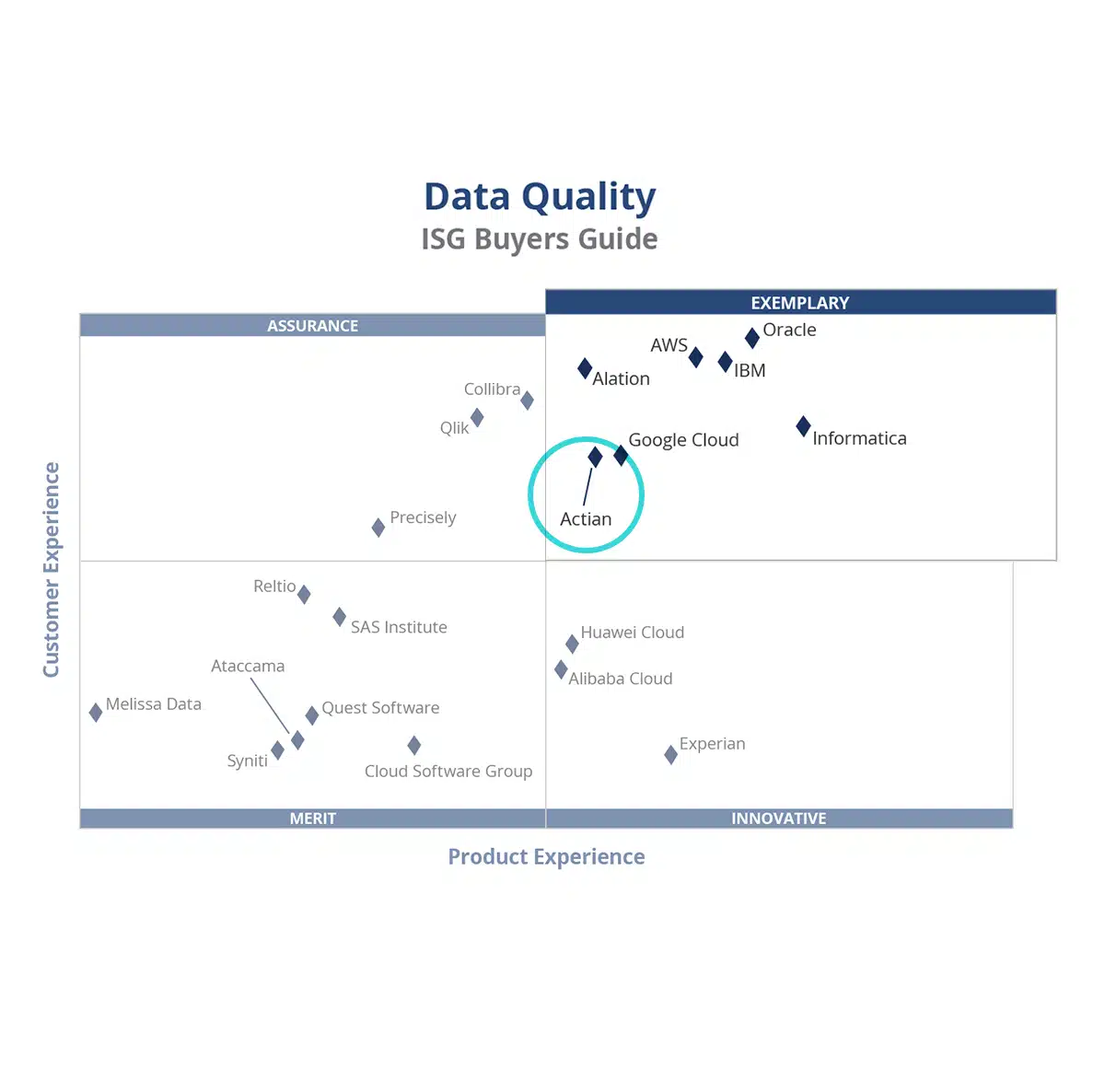What is Cloud Data Integration?
For many years, your services, products, and organizational technology were in data centers you owned and managed. Over time, the storage devices and servers filled these centers, as virtualization became prevalent in 2000 via VMWare. The availability of cost-effective and secure cloud services has facilitated the delivery of software code-based services, making it easier for businesses to rapidly change how they work to address customer demand or solve internal staff productivity issues.
Consider the impact on data! What you managed is potentially now on cloud infrastructure and several other places owned and operated by others. Cloud complicates data storage as the storage can be moved across the globe to better serve your demand in the blink of an eye.
Cloud integration is the creation, management, governance, and maintenance of your technology across many locations, regardless of whether those locations are owned or controlled by your organization. Cloud data integration underpins your ability to benefit from a hybrid mix of technology for all aspects of your business. Sales and marketing can be on a platform that is entirely different from finance, for example. The goal is to make the movement and control of data and these services as cohesive as possible.
Benefits of Cloud Data Integration
Why would we want to add a hybrid cloud solution to our technology requirements?
One of the reasons may be because very few firms have the technical skills and financial health to build and manage their data services. SaaS and cloud vendors can adopt and adapt the latest technology securely to ensure you can attract and retain customers while simplifying the way you work.
Remember that cloud integration combines the computing power you need plus the transfer of data to any application or customer when requested. You want to be known for service that is fast and secure. You also want to have information be quickly available to decision-makers and be up-to-date when you have to make critical decisions.
The COVID-19 pandemic made the world move to the cloud faster than anyone had anticipated. This movement has accelerated the alteration of your ways of work, applications you rely upon, and the vendors that were your partners. Moving to a hybrid data integration cloud model has provided:
- Increase in operational effectiveness and efficiency from elasticity, the ability to scale infrastructure, specifically compute, as business needs change.
- Improved flexibility and agility to meet customer requests with faster time to market.
- Improved service incident management, business continuity.
- Facilitates the concepts of enterprise service and data management, DevOps, and Agile across your organization.
- Increased staff and customer satisfaction.
- Creating a single source of truth in your data.
- Reduced cost of technology (computing power, data storage primarily).
- Reduction of redundant or replicated data.
- Advancing regulatory compliance and governance.
- Automation of workflows by eliminating manual data entry across teams.
- Opex vs Capex savings.
Challenges of Cloud Data Integration
Creating a process to access data and ensure that your applications do not fail requires a mix of storage and computing power readily available in the cloud. But this flexibility comes with challenges, such as:
- Designing data flow across multiple applications with no errors in translation.
- Scaling data and computing capacity (up and down).
- Ensuring that data in warehouses or lakes are secure and accessible by approved individuals or services.
- Minimizing custom data formats as these might impact your agility in the future.
- Allowing non-technical staff access to leverage templates (data) that help them perform their daily tasks.
- Proving to customers, staff, and regulators that information is governed.
Types of Cloud Data Integration
Transitioning to a hybrid environment of cloud, SaaS, and your in-house services requires assistance from partners who understand the technical aspects and how to create a new organizational model. Remember, though, that they will sell their solutions, so even in your design, you might want a mix of partners to provide the best competitive model for your digital future.
Consider some of these questions when you design your integrated cloud future:
- How much do you want to manage, or how willing are you to continually develop your staff to maintain technical excellence?
- You might want to consider a Managed Service Provider (MSP).
- How will you verify that your data integration to the cloud is always synced between environments? (when processed, transported, and imported)?
- Are your applications capable of issuing automated transfer and acceptance triggers for data movement and interoperability?
- Do you want to build your data transfer mechanism or rely on the skills of the cloud or SaaS provider?
- Can your technology become Infrastructure as Code (IaC) or, even better, offered as a Platform as a Service?
- What monitoring and alerting tools and processes do you require?
- Are the real-time dashboards to view data in a variety of formats easy to read and modify?
- Is the solution scalable, reusable, flexible, compliant, and cost-effective?
- How is your data archived and backed up? There are several models from hot access to cold storage, and each has its benefits and challenges to consider.
- If using an MSP or a SaaS provider, who owns your data? If they default, how impacted will you be?
Depending on your answers to these questions and the level of hands-on management you prefer to have, different styles of cloud data integration may be appropriate for you and your organization. Cloud integrated models can be placed in the following categories.
Manual Cloud Data Integration
Manual cloud integration is the process of connecting different cloud-based applications, services, or data sources without the use of automation or pre-built integration tools. Instead of relying on APIs, middleware, or integration platforms, IT teams or developers manually configure connections, transfer data, and ensure compatibility between systems. This approach often involves writing custom code, setting up data pipelines, or using manual file transfers such as CSV exports and imports. While manual cloud integration offers flexibility and control, it can be time-consuming, prone to errors, and difficult to scale as an organization’s cloud infrastructure grows.
Consolidated Cloud Data Integration
Consolidated cloud integration is the process of unifying multiple cloud-based applications, services, and data sources into a single, streamlined system using a centralized integration platform or solution. Unlike manual integration, which requires individual connections between services, consolidated integration leverages automation, APIs, and middleware to enable seamless communication and data exchange across different cloud environments. This approach reduces complexity, improves efficiency, and enhances data consistency by eliminating silos and ensuring that all connected systems operate cohesively. Businesses that implement consolidated cloud integration benefit from improved scalability, real-time data synchronization, and easier system management, making it an ideal solution for organizations with diverse cloud infrastructures.
Federated Cloud Data Integration
Federated cloud integration is a decentralized approach to connecting multiple cloud environments while allowing each system to maintain its autonomy. Instead of consolidating all data and applications into a single platform, federated integration enables seamless interoperability between different cloud providers, on-premises systems, and hybrid infrastructures. This approach is particularly beneficial for organizations that need to integrate diverse cloud services while complying with data sovereignty regulations or industry-specific requirements. Federated cloud integration uses standardized protocols, APIs, and identity management systems to ensure secure and efficient data exchange without requiring a centralized control mechanism. It provides flexibility, scalability, and resilience, making it a preferred solution for enterprises with complex, distributed cloud architectures. However, it does place control of these systems into hands outside your organization (usually your SaaS provider).
How Security Gets Integrated into Cloud Computing
Other than people, data is your most crucial aspect. Data needs to be kept safe and secure, and there are a plethora of rules concerning how data is governed even before you begin to consider all of the software possibilities.
When you use a cloud provider or SaaS application, you are letting someone else into your technology world. Think of keeping a door always open to your house so your neighbor can enter as they wish. You are still accountable for the safety of your home, and the same applies to data integrated into cloud solutions.
Integrating your data with cloud technology necessitates several steps to ensure security:
- Monitor and log all data access.
- Perform penetration tests to ensure that there are no open doors or data leaks.
- Frequently test that data and services are not inadvertently being hosted from a geographical location that places you at risk, legally or otherwise.
- Reduce or eliminate any high-level permission roles via the use of API access or micro-service credentials.
- Ensure that two-factor authentication or multi-factor authentication maintains client and data security between your services and the SaaS provider. This is particularly important when employees work from home or other SaaS providers require access to services and data.
The Open Web Application Security Project (OWASP) is a not-for-profit service that helps organizations consider how to keep cloud and internet-based services safe and secure. Joining this group will help your company plan and monitor for:
- Malicious code injection.
- Non-authenticated login attempts.
- Data integrity issues.
- Session drop-outs/failures.
- References or code exposure.
- Login attempt forgery.
- Unauthorized access checks or infrastructure login attempts.
It’s also important to consider additional protections against malicious security issues. For example, what defense mechanisms are in place against hackers? What safeguards are in place to prevent the SaaS from mining your data and selling it to a competitor? Thinking deeply about these potential threats can help you safeguard your information as well as that of your clients.

Handle Your Cloud Data Integration With Actian
If you’re in the process of incorporating cloud data integration into your organization, Actian has the tools to help. Actian Data Intelligence Platform helps you discover, manage, and secure your data. Meanwhile, DataConnect uses cloud-based technology to integrate your data seamlessly and with unparalleled precision.





